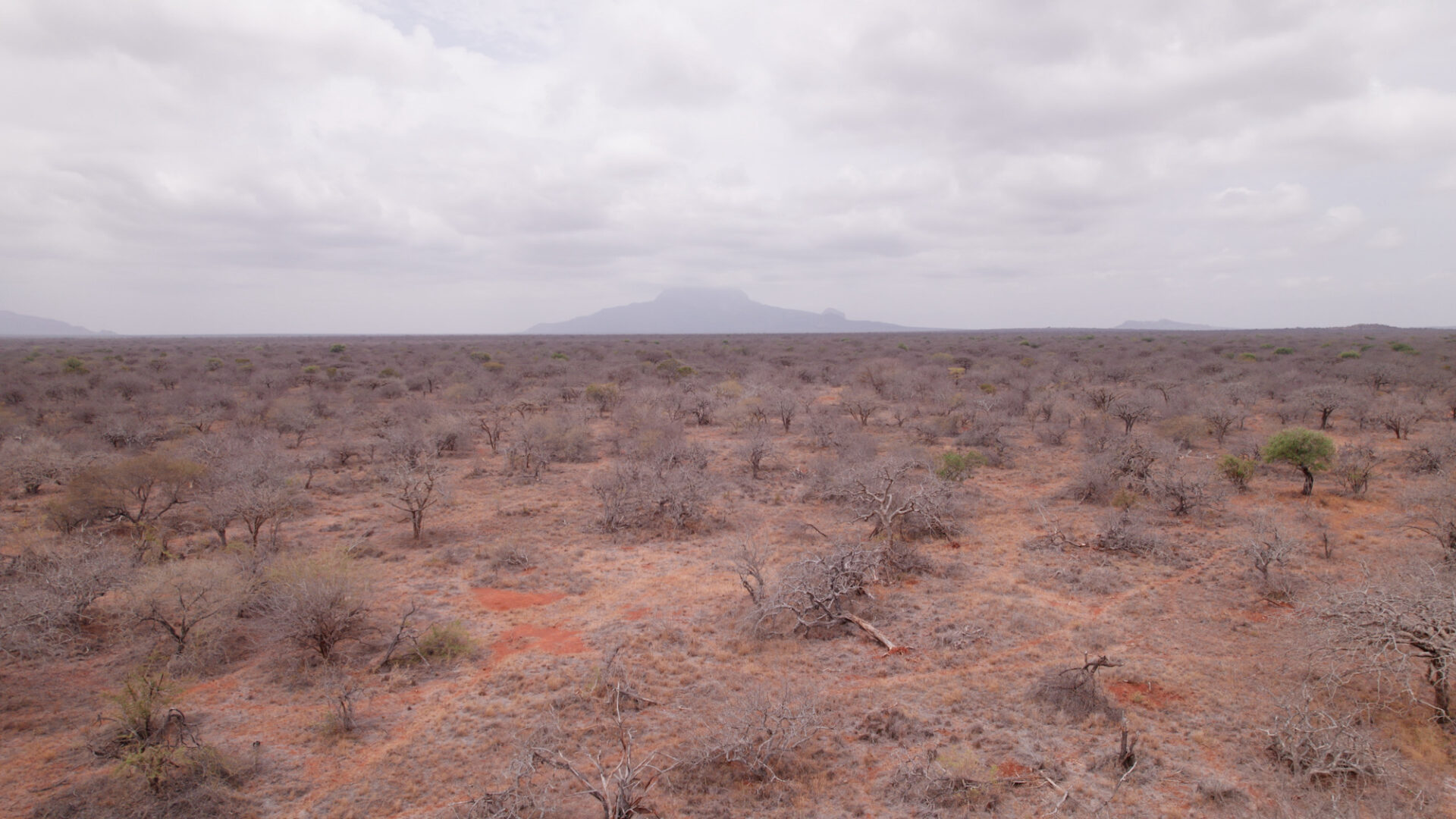The sight of crop failure, soil erosion, animal carcasses, and dry dams paints a grim picture of the unprecedented drought that continues in the Kasigau Corridor REDD+ project area in Kenya.


At around 3 pm, the scorching sun is still shining harshly on the semi-arid landscape of Taita Taveta County in Southeastern Kenya. A group of women sit on top of plastic jerry cans on a cart being pulled by a visibly-thinning donkey. In the far distance, a herd of skinny, frail cows, already showing signs of muscle loss, are making their way back home escorted by a herder. On the opposite side of the road, a group of schoolchildren take shelter under an Acacia tree before proceeding home. The area is as dry as dust. The sight of crop failure, soil erosion, animal carcasses, and dry dams paints a grim picture of the unprecedented drought that continues in the Kasigau Corridor REDD+ project area in Kenya.
The situation is not any different from the rest of the country. Kenya is battling the worst drought in 40 years and the sixth consecutive season of failed rains. The Kenyan Meteorological Department recently predicted that the country would receive below-average rainfall in the upcoming long rain season, between March and May. Unfortunately, the Kasigau region is among the regions in Kenya likely to suffer this fate. If the weatherman’s predictions are accurate, the situation will leave a more devastating impact on the livelihoods of the community, livestock, and wildlife in the project area.
Paul Kazungu, a local youth group leader in Buguta, part of the project area, says the situation is bad. “We haven’t had rain for a very long time, and this has left our water pans, rivers and dams to be empty. We can no longer farm. We have lost most of our cows to the drought. The community is having a hard time and is forced to spend a lot of time looking for water,” he says.
The ongoing lack of water has also had far-reaching implications for education. Students, especially girls, prioritize searching for water for their families over time in school. “The lack of water has even affected performance in school because of absenteeism. A student is forced to accompany her mother for 10km to look for water,” says Evans Mwadembe, a local farmer in Sagalla.
Near the Kasigau mountain, runoff from rainfall has been providing a valuable water resource to surrounding communities in the villages of Bungule, Jora, Makwasinyi and Kiteghe. “Now the water levels have drastically reduced. Before, the community in these villages used to get piped water thrice a week at a cost of Ksh 3/= per jerry can. But now, the water is only available one day per week,” says Tony Mwakio, Project Manager for Kasigau Development Trust. “The little water that they get now cannot sustain home, cattle and farm use,” he adds. A water bowser labeled “Clean Water” travels about 30km from Maungu to supply them with water. “This comes with a cost and now the community members have to pay 30 KSH (0.25 USD) for one jerry can of water,” he adds.
Access to clean water is one of the focal issues in the Kasigau Corridor REDD+ project. Community-led programs in the project area have invested in water projects through local strategies. Over 50 water projects have been initiated, including construction of rock catchments, improving dams and piping systems and construction of gutter systems to improve rainwater harvesting, easing the burden to community members across the project area.
However, these interventions have had their fair share of challenges in this drought period, as there is no rain to harvest clean water in rock catchments and guttering systems. A visit to most schools in the project area also reveals a desperate situation for both wildlife and school children. Many water storage facilities, such as water tanks, have been destroyed by elephants. “Elephants have been invading schools to search for water, destroying water tanks and anything that smells of water in their way,” says a local teacher. In response to this, Wildlife Works is working with other partners to look at the best interventions by trying different deterrent techniques in some schools in the project area. At Itinyi Primary School, an electric lighting system was installed on their water tanks to deter the elephants from approaching them.
The biting drought hasn’t spared wildlife and has escalated the human-wildlife conflict crisis in the project area further. “The wildlife cannot get food and water, so they come into community land in search of it. Most of the time we are fighting for water for our consumption with the elephants,” says Mr Kazungu. “Yesterday, a group of elephants were in my homestead looking for water,” he adds.
To address this, the Kasigau Corridor project, in collaboration with Elephant Cooperation, has implemented the construction of dams and boreholes to satisfy the growing needs of thirsty wildlife. At Rukinga Conservancy in the project area, boreholes and water tanks have been constructed to keep elephants inside the wildlife area whenever they need to quench their thirst, an important step in reducing human-wildlife conflict in community areas bordering wildlife habitats. Other conservancies have been implementing similar techniques in order to maintain water for wildlife and livestock.
Even with the lack of rainfall exacerbating the water crisis challenge, Wildlife Works is committed to investing in local water sources in collaboration with the community. With continued investment in multiple areas, the community is building its climate change resiliency through a combination of nature-based solutions.
